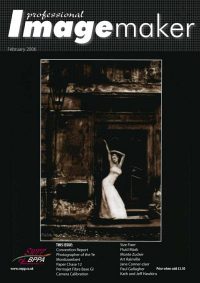articles/Digital/fadeline-page4
Fade & Line Quality Testing - part 4 of 1 2 3 4
by Mike McNamee Published 01/02/2006
There is no single measurement of goodness to describe how accurate a colour is perceived. The eye is most sensitive to changes in colour close to the neutrals and least sensitive to variations within the bright vibrant blues. Sensitivity around the Lab plot is variable. The error between two colours is a measure of the length of the line that connects them in the three dimensional Lab space - this is why we cannot show you the diagram on a flat page. To overcome the sensitivity close to the neutral and the goofy effects around the blues (for example) we use an additional measure called ÄE2000 which attempts to take care of the perceptual variations. Even when you have pinned down the measurement, you are not out of the water as the perception of the error is also size dependent and sometimes a small print looks OK but changes to being unacceptable when you blow it up into a larger print.
So - in summary:
1. Values from near the centre of the graph are more neutral.
2. Values found in places around the plane of the graph are different hues - when they are the same distance from the middle they are roughly the same saturation.
3. Values on the graph origin (the 0, 0 point) are neutral, black and neutral at the bottom and white and neutral at the top end, all shades of neutral grey in between.
4. The error between two colours is the length of the line within the 3-D graph - small lines are better!
5. It is never possible to show the 3-D graph in a magazine because it is flat.
What's good and what's bad?
1. Unprofiled printers deliver average error values between 15 and 25 and at this level look quite poor even to the untrained eye.
2. Colour-managed printers can usually get to between 9 and 12 points and can look quite good, providing the errors in the neutrals are low and that any colour bias in skin tones is not green.
3. Well-profiled printers deliver errors between 4 and 5 over most of the gamut (the deep blue sometimes drifts out to about 12).
4. Contract proofing is usually agreed at between 4 and 7 points.
5. Tuned profiles, and considerable care, can get error values down to 2 points but only experts, in perfect lighting conditions, tend to worry at this level.
6. Under perfect conditions a normally visioned person can detect a difference of about 1 Lab
Please Note:
There is more than one page for this Article.
You are currently on page 4
- Fade & Line Quality Testing page 1
- Fade & Line Quality Testing page 2
- Fade & Line Quality Testing page 3
- Fade & Line Quality Testing page 4
1st Published 01/02/2006
last update 09/12/2022 14:54:06
More Digital Articles
There are 25 days to get ready for The Society of Photographers Convention and Trade Show at The Novotel London West, Hammersmith ...
which starts on Wednesday 14th January 2026





